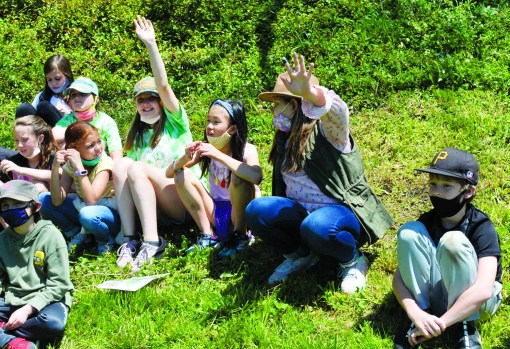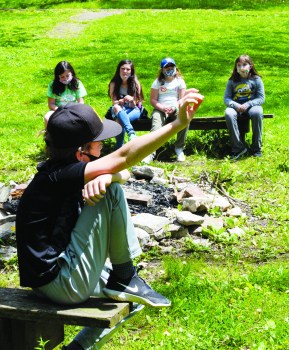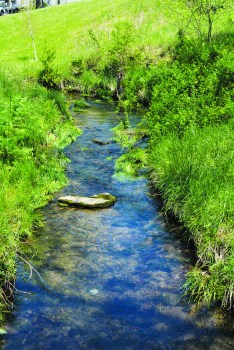Kids learn about nature at AdventureServe
Published 4:00 pm Tuesday, May 4, 2021
|
Getting your Trinity Audio player ready...
|
Did you know …
That the fruit of the pawpaw tree is good for you, but the skin and seeds are toxic and can make you sick?
That the peregrine falcon is the fastest bird in the world and dive at speeds exceeding 300 miles per hour?
Or that when mowing near a stream one should leave a “riparian” buffer of tall grass and other plants necessary to keep the water from being clogged with algae and other pollutants?
Students at Wilmore Elementary School know those things after they visited their neighbor down the hill, AdventureServe Ministries last Friday, for a field trip to celebrate Arbor Day and Earth Month.
AdventureServe ordinarily brings teens in from around the country for a time of outdoor adventure and community service, but on Friday, the group played host to fourth-graders whose school is so close to the old camp meeting grounds that they could hike to it.
Andy Bathje, executive director of the group, gave the kids a talk about the important relationship between trees and streams while standing beneath a giant, dead 300-year-old chinquapin oak that had been carved into a sculpture.
“It’s really important to plant certain things that will kind of create a filter that will make everything cleaner before it gets to the stream,” he told the children. “It’s important to have shade over a stream. When streams get hit by direct sunlight for long stretches, that sunlight can make pollutants even worse and create a lot of green algae and things like that.”
The kids then watched as Mary Miller, a volunteer, planted pawpaw trees next to the little creek known as Wilmore Town Branch before leading the kids in singing a folk song about a little girl “way down yonder in the pawpaw patch.”
Kyle Bixler, a self-described “bird nerd” since he was a fourth-grader, talked to the kids about the amazing variety of birds, including the Blackburnian warblers that look like they’re on fire and are only in Kentucky for a week or two as they migrate thousands of miles to South America to the exact same place they were last year, “but they don’t have Google Maps. … It’s just like hardwired in their brain; they know where they’re going,” he said.













